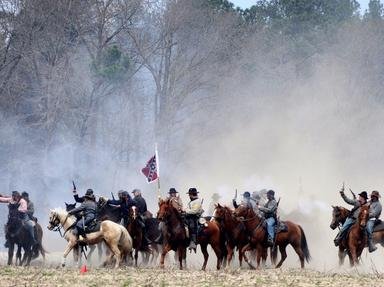Quiz Answer Key and Fun Facts
1. First Battle of Bull Run, also known as First Manassas, 1861.
2. The Battle of Wilson's Creek, also known as the Battle of Oak Hills, 1861.
3. The Battle of Fort Donelson, 1862.
4. The Battle of Pea Ridge, also known as the Battle of Elkhorn Tavern, 1862.
5. The Battle of Shiloh, also known as the Battle of Pittsburg Landing, 1862.
6. The Battle of Cedar Mountain, also known as the Battle of Slaughter's Mountain and Cedar Run, 1862.
7. The Second Battle of Bull Run, also known as Second Manassas, 1862.
8. The Battle of Chancellorsville, 1863.
9. The Siege of Vicksburg, 1863.
10. The Battle of Gettysburg, 1863. We'll finish with an easy one. Was it a Confederate victory?
Source: Author
daver852
This quiz was reviewed by FunTrivia editor
bloomsby before going online.
Any errors found in FunTrivia content are routinely corrected through our feedback system.
